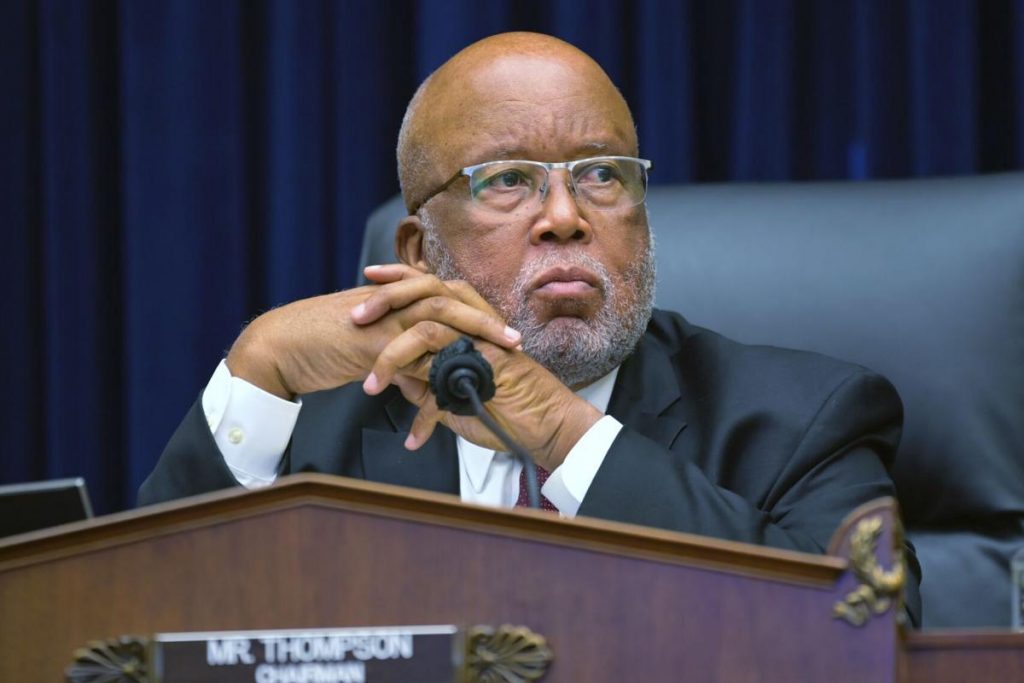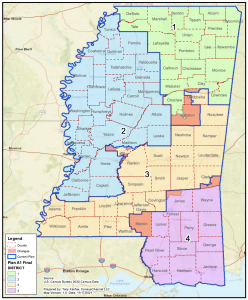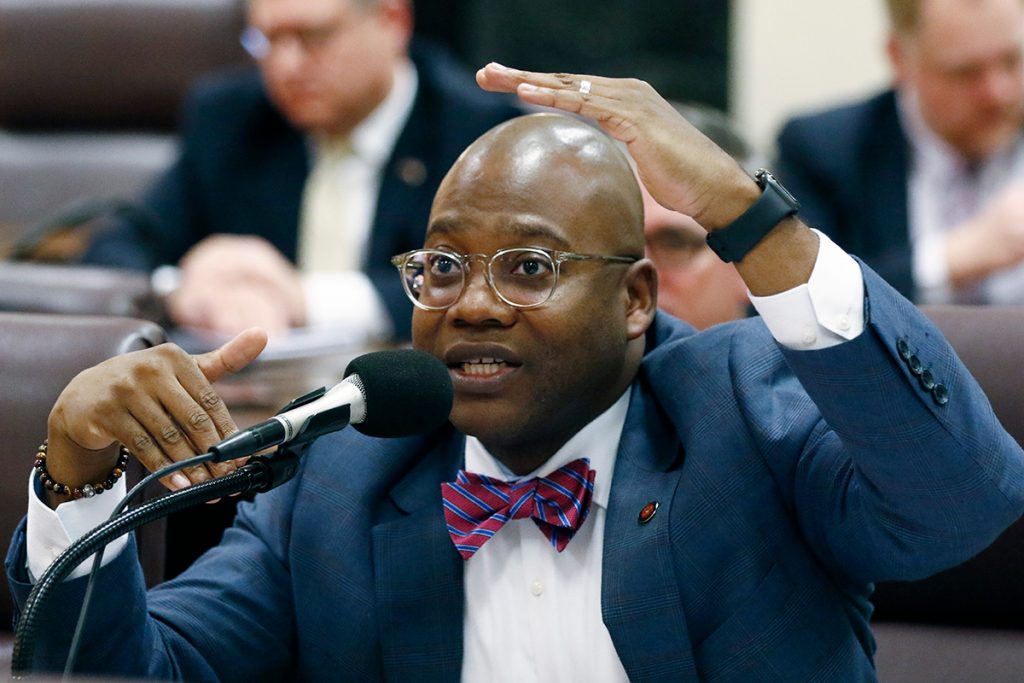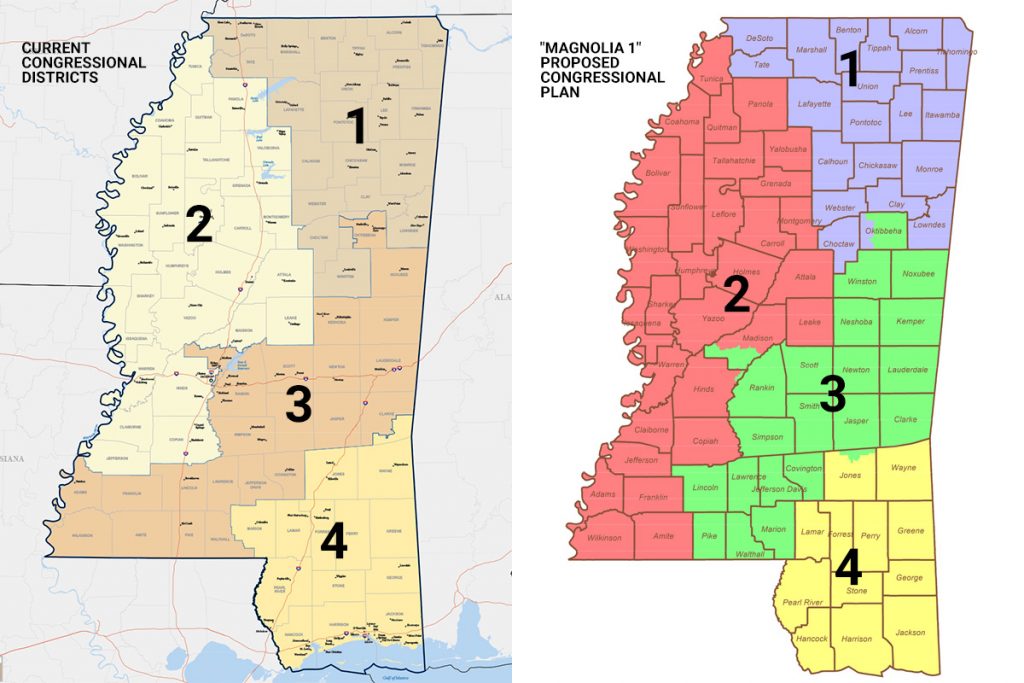Mississippi’s Joint Redistricting Committee has released its recommendations for the state’s four new congressional districts, and the result could be a sprawling District 2 for the only Democratic and only Black representative, Bennie Thompson, in a state that is 38% Black.
The majority-Republican committee was tasked with maintaining proportional representation for each of the state’s four congressional districts in the face of significant population loss. District 2, which is Mississippi’s only majority-Black district and includes the Delta and parts of the capital city, has seen the lion’s share of population loss in the past decade, losing roughly 65,000 residents.

The committee’s proposed solution is an expansion of Mississippi’s 2nd congressional district, which already spans the majority of the western Mississippi, to include Adams, Franklin, Wilkinson and Amite counties. The new map, called the “Magnolia 1” plan, also shifts more of Jackson into Thompson’s District 2, but very clearly excludes the whiter, more Republican-leaning section of Northeast Jackson, as well as Ridgeland and Madison.
The proposal is now in the hands of the Mississippi Legislature, which will deliberate on the issue and establish the final congressional borders in the upcoming 2022 session. Mississippi’s many legislative districts—174 in total—will also be subject to redistricting due to shifting populations.
The plan departs from the preferred map of Thompson himself, who endorsed the NAACP’s proposal. That proposal would have left the shape of the state’s four districts mostly intact, making up for District 2’s population loss by shifting all of Hinds County and more of the Jackson metro area into Thompson’s district.
‘As Compact As Possible’
Mississippi Senate Minority Leader Derrick Simmons, D-Greenville, told the Mississippi Free Press in a Dec. 16 interview that the primary contention of the redistricting committee members who voted against the proposal was the size of the districts in question.
“We wanted to make sure the districts are as compact as possible, and to make sure we are maintaining communities of interest—trying to avoid splitting counties and municipalities. The map proposed by the NAACP achieved all of that,” Simmons said.

“I think that the communities of interest are south Mississippians, versus Congressman Thompson’s (constituency) in the Delta and in Jackson,” the state Senate leader added.
All three of the five Black members of the Joint Redistricting Committee present at the final vote, including Simmons, voted against the plan. But not all Democratic members of the committee opposed the proposal.
Sen. Hob Bryan, D-Amory, who voted for the proposal, cited the lack of alternatives formally submitted to the committee. “If you look at the existing districts and the new districts, there’s not that much difference between any of them,” Bryan told the Mississippi Free Press in an interview.
“There’s not much difference in terms of Black voting-age population in any of the proposals. There’s not much difference in geography. The 2nd (district) had to pick up the population somewhere. I think every incumbent has 95% of his old population,” Bryan added.
The difference between adding all of Hinds County or the four southwestern counties, Bryan said, are miniscule compared to what some states are facing. “I say all this because I think it’s important to remember … this is not a year where we lost a congressional district, and everybody’s in turmoil. If you look at what’s going on in other states, some incumbents are waking up and finding out that they don’t have a district,” he said.
Still, the Democratic senator acknowledged that his own personal preference was closer to the NAACP plan. “I would have voted for the NAACP plan or something close to it,” Bryan said. “It just never was offered as an amendment.”
The new congressional map is not set in stone. The state Legislature must finalize it in the 2022 session, although it is likely that the strong Republican majority will stand beside the committee’s recommendation. In the session, however, the NAACP map may serve as a full alternative.
‘It Was Public Business’
While many of the committee’s hearings across the state were live-streamed, under the evolving COVID-19 protocols of the pandemic, a number of civil-rights watchdog groups have alleged that the work done on the proposed congressional maps behind closed doors constitutes a violation of the state’s Open Meetings Act, which requires “that public business be performed in an open and public manner.”

Groups including the ACLU of Mississippi, League of Women Voters of Mississippi, Mississippi Center for Justice, Mississippi Votes, Southern Poverty Law Center, Mississippi State Conference NAACP, and Southern Echo Inc. submitted a complaint to the Mississippi Ethics Commission, asserting that the joint committee “violated the (Open Meetings Act) on November 19, 2021, when it reviewed the prospective U.S. congressional map after its public meeting.”
The complaint continues: “The Committee adjourned that meeting without entering executive session. Chairman (Jim) Beckett invited members of the Committee to his office to view the U.S. congressional map that would be, and was, offered to the public, voted on and adopted by the Committee on December 15, 2021. The map viewing, and any deliberation thereof, was public business and should have occurred in an open meeting or, at least, in a properly executed executive session.”
At the heart of the complaint is the assertion that the public is incapable of participating in the redistricting process, which determines their primary representatives on the nationwide scale, when elements of the negotiations are left behind closed doors.
“The undemocratic nature of blocking constituents interested in participating in the redistricting process is especially troubling given the long-run effects this will have on how communities are governed and resources are allocated,” Southern Poverty Law Center’s Mississippi State Director Waikinya Clanton argued.
Ted Booth, staff counsel for the redistricting committee, told the Mississippi Free Press in an interview that the committee was conferring with counsel on the the complaint before commenting publicly. Rep. Jim Beckett, R-Bruce, chairman of the committee, declined a request for comment.










